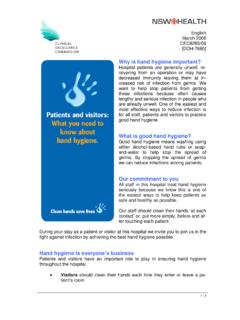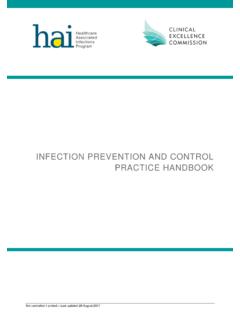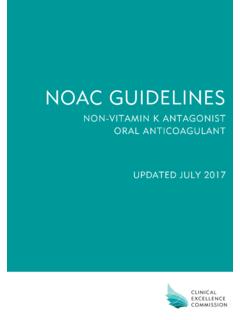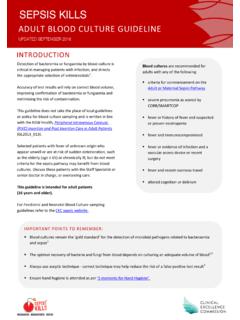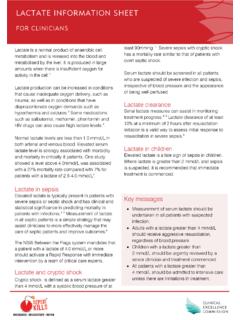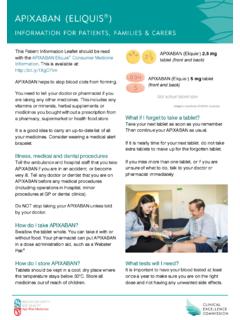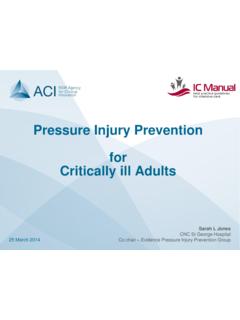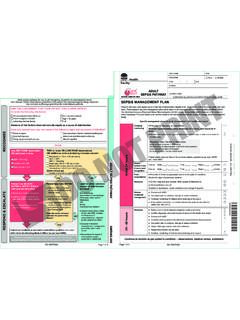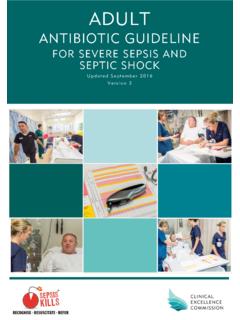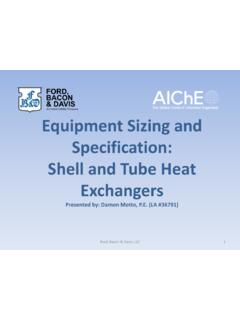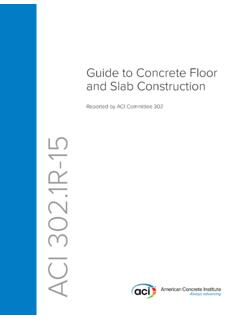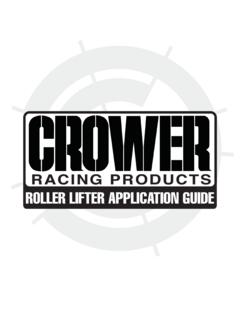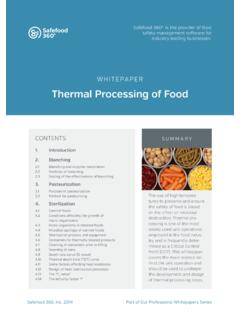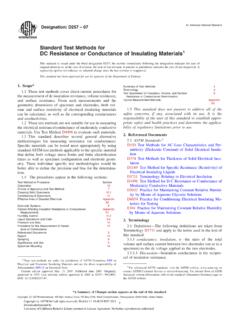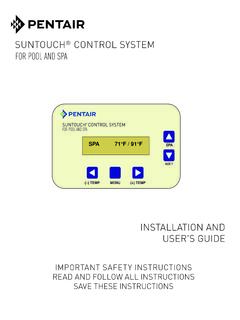Transcription of Chapter 4: Personal protective equipment - Ministry of Health
1 Uncontrolled copy when printed Clinical Excellence Commission COVID-19 Infection Prevention and Control Manual Version - 1 March 2022 Page 109 of 229 Chapter 4: Personal protective equipment This Chapter is part of the COVID-19 Infection Prevention and Control Manual, Clinical Excellence Commission, 2022. The publication summarises current evidence about COVID-19 infection prevention and control strategies and interventions, and their implementation in healthcare settings. The publication will continue to evolve with additional chapters over time that address infection prevention and control in other settings. As new resources become available, they will be added as hyperlinks of the resources section in each Chapter or to the appendices. Contents Key points 110 Acronyms and abbreviations 110 Introduction 112 General principles when using PPE 112 PPE training 113 PPE risk assessment 114 Types of PPE 114 PPE donning and doffing 128 Extended or sessional use of PPE 131 Bringing your own PPE 132 Patient transfer / transport 132 Mask use and skin sensitivity 133 Uniforms and scrubs 136 References 138 Bibliography 138 Appendix 4A: COVID-19 risk assessment guide for PPE selection for direct care of patients 141 Appendix 4B: Visual guide to application of PPE 143 Appendix 4C: Aerosol-generating procedures 144 Uncontrolled copy when printed Clinical Excellence Commission COVID-19 Infection Prevention and Control Manual Version - 1 March 2022 Page 110 of 229 Appendix 4D: PPE in Allied Health procedures 147 Appendix 4E: Managing PPE for the administration of hazardous drugs 151 Appendix 4F.
2 PPE guidance for NSW Health security HW 153 Appendix 4G: AAMI Level Standards for gowns 155 Appendix 4H: AS 4381:2015 Single-use surgical face mask use in healthcare 156 Appendix 4I: Properties of P2 and N95 respirators 157 Appendix 4J: P2 and N95 respirator range within NSW Health 158 Appendix 4K: Difference between elastomeric respirators & PAPRS 162 Key points Personal protective equipment (PPE) is essential when caring for patients with suspected or confirmed COVID-19 PPE forms part of Standard, Contact, Droplet and Airborne Precautions Understanding how to choose the appropriate PPE and how put it on (don) and remove it (doff) safely is essential for Health worker (HW) safety Hand hygiene is a key part of donning and doffing PPE PPE training modules are available at HETI My Health Learning The use of P2/N95 respirators (masks) is accompanied by fit checking (at each point of use) and fit testing COVID-19 risk assessment and application of PPE should be aligned with the recommendations in Chapter 3: Response and Escalation Framework.
3 Acronyms and abbreviations AAMI Association for the Advancement of Medical Instrumentation ABHR Alcohol-based hand rub ACORN Australian College of Perioperative Nurses AGP Aerosol-generating procedure ANZCA Australian and New Zealand Collage of Anaesthetists APF Assigned protection factor ARTG Australian Register of Therapeutic Goods ASTM American Society for Testing and Materials Uncontrolled copy when printed Clinical Excellence Commission COVID-19 Infection Prevention and Control Manual Version - 1 March 2022 Page 111 of 229 BFE Bacterial filtration efficiency BiPAP Bilevel Positive Airway Pressure CDC Centres for Disease Control and Prevention CDNA Communicable Diseases Network Australia CPAP Continuous positive airway pressure ED Emergency Department ESLI End of service life indicator FDA Food and Drug Administration HME Heat and moisture exchanger HW Health worker IFU Instructions for use IPAC Infection prevention and control NIOSH National Institute for Occupational Health and Safety ONS Oncological Nursing Society PAPR Powered air purifying respirator PEEP Positive end expiratory pressure PEL Permissible exposure limit PFE Particle filtration efficiency PPE Personal protective equipment RPD Respiratory protection device RPP Respiratory protection program SHPA Society of Hospital Pharmacists of Australia WHO World Health Organization Uncontrolled copy when printed Clinical Excellence Commission COVID-19 Infection Prevention and Control Manual Version - 1 March 2022 Page 112 of 229 Introduction PPE protects the wearer from pathogenic microorganisms.
4 Proper use helps to keep HWs safe and reduce the spread of COVID-19. PPE for care of patients/clients with suspected or confirmed COVID-19 includes surgical masks, particulate filter respirators (such as P2 or N95), eye protection, gloves and gowns or aprons. The terms P2 and N95 are used interchangeably in this manual. This Chapter provides guidance on the use of PPE in acute healthcare settings during the COVID-19 pandemic. The guidance in the Chapter should be considered as the minimum. This advice is continually reviewed as new evidence about COVID-19 transmission risks becomes available. General principles when using PPE Using PPE optimally is important for HW safety. This means selecting appropriate PPE at the right time, in the right setting, for the right patient and then applying (donning) and removing (doffing) PPE in line with evidence-based practice and current COVID-19 guidance. General principles when using PPE include: HWs caring for patients with COVID-19 should be trained in the correct use of PPE including donning and doffing.
5 Training should include when hand hygiene and glove changes are required during different procedures or tasks on the same patient/client Only PPE labelled as reusable should be cleaned, disinfected, and reused according to the manufacturer s reprocessing instructions; all other PPE must be disposed of after use Extended or sessional use of a mask and eye protection is currently only recommended when caring for patients with suspected or confirmed COVID-19 Isolation aprons/gowns (Levels 1, 2, 3 and 4) which are impervious or fluid resistant are suitable for Contact, Droplet and Airborne Precautions Sterile surgical gowns (Levels 1, 2, 3 and 4) should only be used in surgical environments and for sterile procedures When caring for patients with Droplet and Airborne Precautions, eye protection is required along with a surgical mask or P2/N95 respirator Fluid resistant surgical masks (Levels 1, 2 and 3)
6 Are all suitable for Contact and Droplet Precautions P2/N95 respirators are used when providing care to patients with suspected or confirmed COVID-19 or for close contact of a COVID-19 case P2/N95 respirators should be fit tested before first use and fit checked at every use Incorrect removal of PPE is associated with an increased risk of contamination For further information on recommended PPE refer to: Uncontrolled copy when printed Clinical Excellence Commission COVID-19 Infection Prevention and Control Manual Version - 1 March 2022 Page 113 of 229 Appendix 4A: Recommended PPE for Health workers in clinical settings Appendix 4B: Visual guide to application of PPE Appendix 4C: Aerosol-Generating Procedures Appendix 4D: PPE in Allied Health procedures Appendix 4E: Managing PPE for the administration of hazardous drugs Appendix 4F: PPE guidance for NSW Health security HW PPE training Training on the appropriate selection, use and disposal of PPE is required to ensure safe use of PPE.
7 Some of the potential issues to consider are: How to minimise unnecessary contact with a mask Importance of adherence to hand hygiene before donning PPE, during doffing and following cleaning/disinfection of reusable protective eyewear or face shields When and how to change gloves between different procedures or tasks Correct removal and cleaning/disinfection of reusable protective eyewear How to ensure adherence to proper PPE donning and doffing technique to reduce self-contamination. Refer to HETI My Health Learning training modules in Table 3 below. TABLE 3: MY Health LEARNING MODULES RELEVANT TO COVID-19 PPE Title Course code Step-by-step guidance on PPE donning and doffing 294450660 Donning and fit checking of P2/N95 respirators in NSW healthcare settings video series 319438161 Personal protective equipment for combined Transmission-Based Precautions 294450660 Infection Prevention Transmission-Based Precautions 253093581 Infection Prevention Enhanced Precautions for Pandemic Flu 289888589 Uncontrolled copy when printed Clinical Excellence Commission COVID-19 Infection Prevention and Control Manual Version - 1 March 2022 Page 114 of 229 PPE risk assessment Over the course of the pandemic, risk assessment for PPE has become critical on three different levels: 1.
8 Standard Precautions - use PPE when there is an anticipated or likely risk of contamination with splashes of blood or body substances and based on the nature of care or the task being undertaken 2. Transmission-Based Precautions - consider the need for Contact, Droplet and Airborne Precautions based on the mode of transmission when caring for patients with epidemiologically important or transmissible pathogens with high-risk consequences that can transmit or cause infection 3. Response and Escalation Framework - the level and type of PPE for clinical care of suspected or confirmed COVID-19 patients should be based on the risk assessment (see Chapter 3: Response and Escalation Framework). Types of PPE The type of PPE used will vary based on the level of precautions required, such as Standard Precautions and Contact, Droplet or Airborne Precautions. The procedure for putting on and removing PPE should be tailored to the specific type of PPE.
9 Appropriate PPE should be selected to prevent contamination of skin, mucous membranes and/or clothing. Selection should be guided by the anticipated type and amount of exposure to blood and body substances and the likely transmission route of microorganisms. The CEC Competency Assessment for Combined Precautions provides guidance on assessing HW competency in application of Combined Precautions. Aprons and gowns Disposable fluid resistant aprons or gowns are designed to protect uniforms or clothing from moisture or soiling from blood, body substances and/or transmissible microorganisms during direct patient care. They also protect the patient during direct contact. Disposable, fluid resistant aprons are recommended for general clinical use where the risk of contamination from blood of body substance is low , when providing routine care for a patient who is not coughing, sneezing or vomiting. Apron use can be considered based on anticipated contact or exposure to droplets while caring for symptomatic COVID-19 patients.
10 For guidance see Appendix 4A: Recommended PPE for Health workers in clinical settings. There are two main types of gowns available: isolation gowns and surgical gowns. Isolation gowns offer varying resistance to blood and other bodily substances depending on the type of the material, permeability and wear and tear. Isolation gowns may be classified as disposable/single-use or reusable/multi-use . Disposable/single use isolation gowns are designed to be discarded after a single use and are typically constructed of nonwoven materials alone or in combination with plastic films or other materials that offer increased protection from liquid penetration. These gowns should offer an impervious or fluid resistance barrier. Uncontrolled copy when printed Clinical Excellence Commission COVID-19 Infection Prevention and Control Manual Version - 1 March 2022 Page 115 of 229 The need for, and type of gown selected, is based on the nature of the patient interaction, including the anticipated degree of contact with infectious material and potential for blood and body substance penetration of the barrier.
